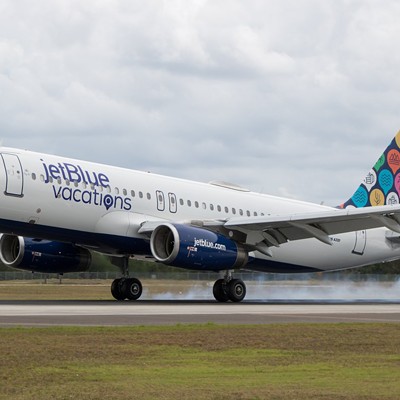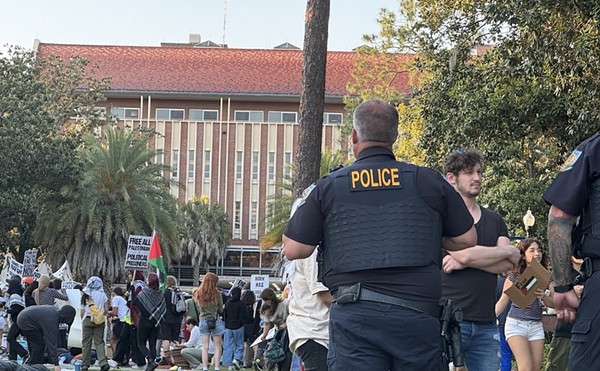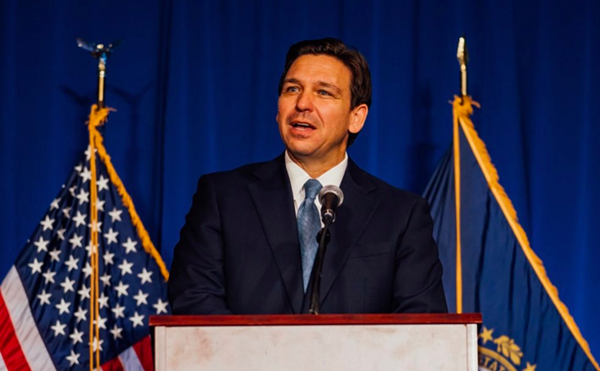Florida radio moved more firmly into the hands of the nation’s shrinking band of radio megacorporations last week, as Lowell Paxson sold his 46 stations to Lowry Mays’ Texas-based Clear Channel Communications.;;The $693 million sale, which includes 526 billboards and two minor league sports teams, made a small ripple in the business press. These days big radio deals are no big deal, given the billions of dollars that have changed hands since the Telecommunications Act of 1996 lifted caps on the number of stations a single company can own.;;As consolidation continues, advertising rates have shot up. And despite claims by some analysts that conglomeration will help create space for more diversity of radio programming, the logic of the market dictates otherwise.;;Here’s how the board looks today, and what may be in store for tomorrow:;;Paxson, the West Palm Beach Home Shopping inventor had long planned to spin off his radio holdings and concentrate on his UHF television stations, which currently reach more than half of all U.S. households. Paxson plans to build a cable-based network featuring home shopping and "long form" advertising. Basically, it will be 24-hour commercials.;;Radio was just a stepping stone for Paxson, his company’s boast of being "Florida’s largest broadcaster" more fancy than fact. Just a year ago Paxson bought six Orlando stations, bragging in a press release that with the purchase, Orlando became the country’s first radio market to be "closed" under deregulation ("Air Force," June 27, 1996). In other words, local control was gone, with Paxson, Cox Communications of Atlanta and Chancellor Media of Irving, Texas, controlling the top 12 stations.;;For Paxson, the radio stations were reliable cash cows, servicing the $200 million debt it amassed in a two-year buying spree. But even relentlessly promoted WTKS "Real Radio," the local flagship, ranked no better than fifth in local market revenues. And the hype and fanfare surrounding the launch of WSHE, Paxson’s most significant local format change, couldn’t obscure the station’s failure in the ratings race. An analysis by Virginia-based BIA, a communications consulting company, showed WSHE earned only 3.5 percent of the local revenues -- placing it 13th among local stations and 12th among the 13 largest local FM stations.;;"SHE was a terrible move," says a local radio buyer, adding that the chain’s advertising rates are not overpriced when compared to industry leaders like WWKA, Cox’s country-music juggernaut. ;;Ironically, while Paxson’s purchase of the station’s last year closed the market, putting the 12 most powerful stations under control of large, remote owners, it was the 13th -- and sole locally owned -- station, WLOQ, that surged forward. Today, WLOQ pulls in significantly more revenue than WSHE, cracking the closed market.;;But the bottom line is still the bottom line. Today Cox owns 30.5 percent of the market, Clear Channel (from Paxson) 28.5 percent, while Chancellor controls a whopping 33.7 percent, according to BIA. ad revenue, by BIA’s estimation.;;Together these three absentee owners haul home over $67 million, or 92.7 percent, in Orlando advertising dollars.;;National radio advertising revenues increased by 11 percent last year, far beyond the inflation rate and nearly double the industry’s 60-year average of about 7.5 percent, the Wall Street Journal reported last week. "It’s exactly about consolidation," said Randy Michaels, CEO of Jacor Communications.;;Because the cost of radio production is fairly stable, and the number of stations fixed, the increase comes from inflated advertising rates, says Jim Naureckas of Fairness and Accuracy in Reporting, a New York-based media-watch group. "The whole point of deregulation in radio is to be able to get local monopolies," he says. "Once you have achieved the local monopoly, your ad rates can go way up." When that happens, look for local car dealers to pass on their ad costs to buyers. ;;Orlando is the nation’s 38th largest market. But it generates the 26th most radio advertising revenue, which could indicate local stations are already overpricing their ads. But BIA’s Mark O’Brien says it also could indicate we have too many stations. He suggests this could cause the owners to experiment with some of the weaker stations’ formats, in a bid to break out of the pack.;;The more-variety-through-corporate-consolidation argument doesn’t impress Naureckas. What matters to citizenship is news sources, not adult contemporary versus rock. "You’d be foolish if you owned six stations in a market to have more than one news department," he notes. "But from the point of view of the consumer, that’s a bad thing." This is the trouble business reporters don’t dwell on.;; It probably doesn’t matter to most people that Paxson stock languishes around $12, despite Lowell Paxson’s fevered pitch to investors that all-commercials-all-the-time is the wave of the future. What matters more is what the megamedia corporations don’t tell you, which boils down to this: "Competition is fine for y’all; we’d rather have control."

WE LOVE OUR READERS!
Since 1990, Orlando Weekly has served as the free, independent voice of Orlando, and we want to keep it that way.
Becoming an Orlando Weekly Supporter for as little as $5 a month allows us to continue offering readers access to our coverage of local news, food, nightlife, events, and culture with no paywalls.
Scroll to read more Orlando Area News articles
Newsletters
Join Orlando Weekly Newsletters
Subscribe now to get the latest news delivered right to your inbox.

















